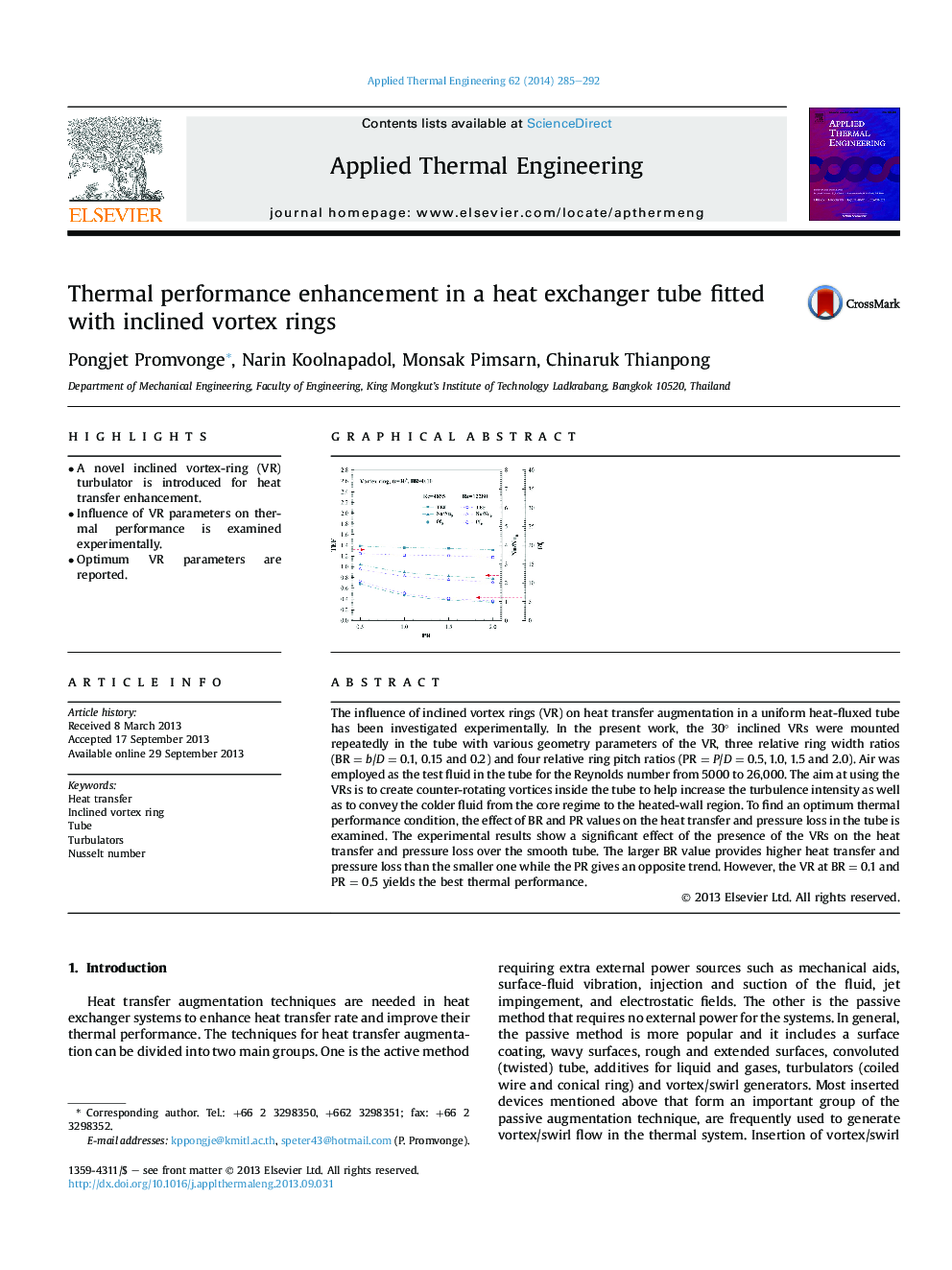| Article ID | Journal | Published Year | Pages | File Type |
|---|---|---|---|---|
| 646749 | Applied Thermal Engineering | 2014 | 8 Pages |
•A novel inclined vortex-ring (VR) turbulator is introduced for heat transfer enhancement.•Influence of VR parameters on thermal performance is examined experimentally.•Optimum VR parameters are reported.
The influence of inclined vortex rings (VR) on heat transfer augmentation in a uniform heat-fluxed tube has been investigated experimentally. In the present work, the 30° inclined VRs were mounted repeatedly in the tube with various geometry parameters of the VR, three relative ring width ratios (BR = b/D = 0.1, 0.15 and 0.2) and four relative ring pitch ratios (PR = P/D = 0.5, 1.0, 1.5 and 2.0). Air was employed as the test fluid in the tube for the Reynolds number from 5000 to 26,000. The aim at using the VRs is to create counter-rotating vortices inside the tube to help increase the turbulence intensity as well as to convey the colder fluid from the core regime to the heated-wall region. To find an optimum thermal performance condition, the effect of BR and PR values on the heat transfer and pressure loss in the tube is examined. The experimental results show a significant effect of the presence of the VRs on the heat transfer and pressure loss over the smooth tube. The larger BR value provides higher heat transfer and pressure loss than the smaller one while the PR gives an opposite trend. However, the VR at BR = 0.1 and PR = 0.5 yields the best thermal performance.
Graphical abstractFigure optionsDownload full-size imageDownload as PowerPoint slide
